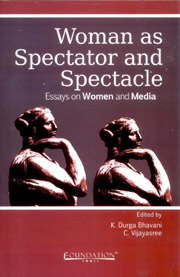Book contents
- Frontmatter
- Contents
- Notes on Contributors
- Preface
- Introduction
- Part I Media and Gender (In)Justice
- 1 Wanted: A Gender Perspective on Media Globalisation
- 2 Media Texts for Women by Women
- 3 Media-ting ‘Patriarchy’
- 4 The Endangered Gender: Images of Women in Advertisements
- 5 Woman in Visual Media: The Spectator vs. the Spectacle
- 6 Two Faces of Women on Television: Need for a Gender Policy
- Part II Framing Women
6 - Two Faces of Women on Television: Need for a Gender Policy
from Part I - Media and Gender (In)Justice
Published online by Cambridge University Press: 05 November 2011
- Frontmatter
- Contents
- Notes on Contributors
- Preface
- Introduction
- Part I Media and Gender (In)Justice
- 1 Wanted: A Gender Perspective on Media Globalisation
- 2 Media Texts for Women by Women
- 3 Media-ting ‘Patriarchy’
- 4 The Endangered Gender: Images of Women in Advertisements
- 5 Woman in Visual Media: The Spectator vs. the Spectacle
- 6 Two Faces of Women on Television: Need for a Gender Policy
- Part II Framing Women
Summary
Women on television need to be discussed under two heads: women in media (as work force) and women as media subjects (as content in media). Another category is that of women as viewers. Women as viewers are also participants in a significant way. It has been established beyond doubt that all over the world, women constitute a considerable percentage of television viewers. In India, perhaps the percentage of female television viewers is even higher as television constitutes the chief source of entertainment for moderately educated middle-class women. A lot has been said about how badly women are portrayed in soap operas and how these serials, in all languages, are reinforcing the stereotypical female image. Much has also been said about the way women are portrayed in advertisements. Through this paper, I will try to build up an argument in favour of a Gender Policy in media.
Indian media, whether print or electronic, has recently been facing serious questions about the lack of a policy where women and depiction of women's issues are concerned. Print media has often been criticised for publishing advertisements which are demeaning to women, in the same pages where women's issues are seriously discussed. But such objections are rarely met with serious consideration by policy makers because media is, in the ultimate analysis, only a business enterprise. Advertisements give revenue which can obviously not be ignored by any policy maker.
- Type
- Chapter
- Information
- Woman as Spectator and SpectacleEssays on Women and Media, pp. 50 - 56Publisher: Foundation BooksPrint publication year: 2010

